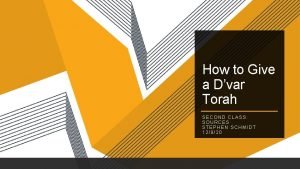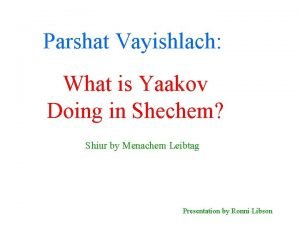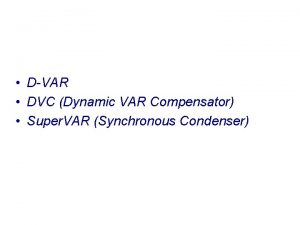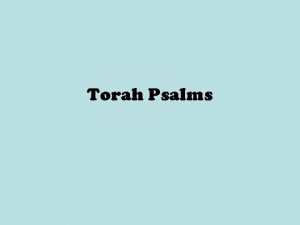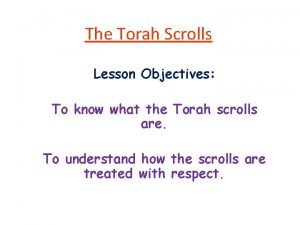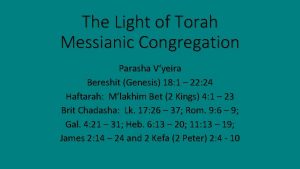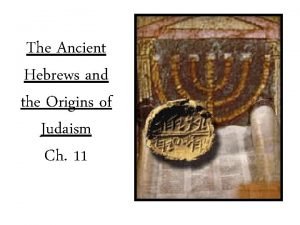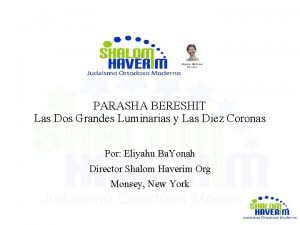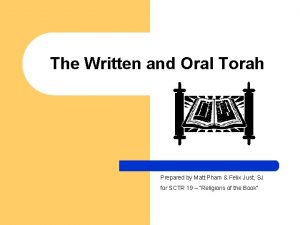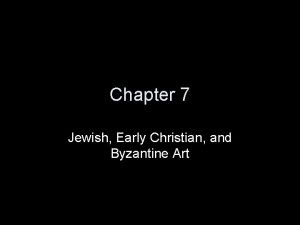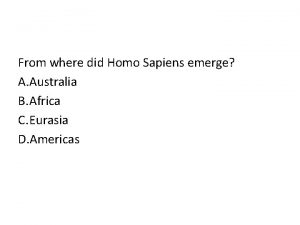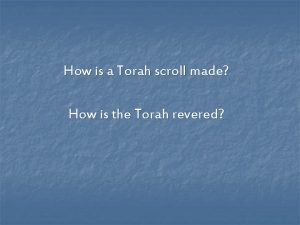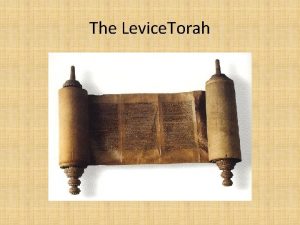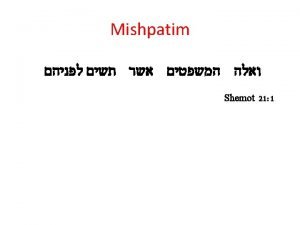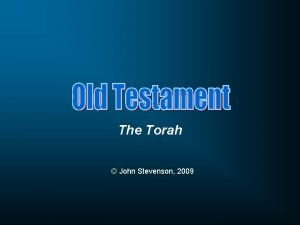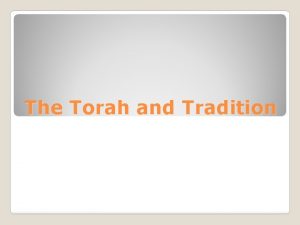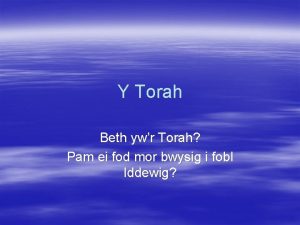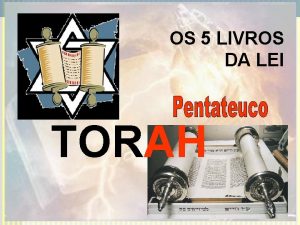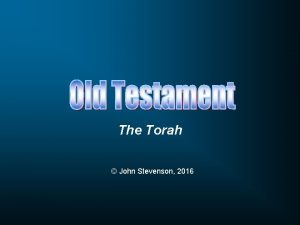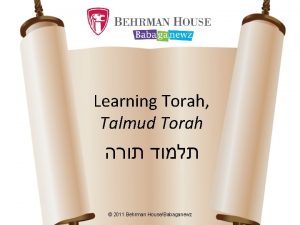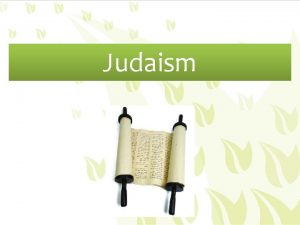How to Give a Dvar Torah SECOND CLASS













- Slides: 13

How to Give a D’var Torah SECOND CLASS: SOURCES STEPHEN SCHMIDT 12/9/20

Last class: What is a d’var Torah? Why do we give them? How do I write and give one? How to Give a D’var Torah Class #2: D’var Torah Sources This class: 1. Tradition of interpreting Torah 2. The structure of traditional sources: application, expansion, translation 3. Accessing sources – using Sefaria

What does the Torah mean? The Torah is a document whose meaning is open to interpretation; that’s why we need divrei Torah! “You should know that we have permission to explain the implication of the verses after careful study – even though our conclusions differ from the explanation of our Sages. That is because there are 70 faces to the Torah. There is no prohibition against differing from the words of our Sages except if it changes the Halacha. Similarly, we find that even though the Amoraim did not have the right to disagree with the Tannaim in halachic matters – but we find that they offered alternative explanations to verses. ” (Or Ha. Chaim on Genesis 1: 1: 25) Teaching something from this tradition of interpretation – or using it to answer a question about the Torah text – is a great way to create an interesting d’var Torah

Torah she’b’al peh Jewish tradition teaches that at Sinai we received both a written Torah and a guide to its interpretation – an oral Torah. “Torah” in its broad sense refers to the entire history of that interpretation as well as the written scroll. The tradition of interpretation provides many (many!) sources for you to draw on in talking about the written Torah. Although we call it an “oral Torah”, it has largely been written down – and the written Torah was transmitted orally before being written down, as well! We can divide the contents of the oral Torah into two broad categories: 1. Halakhah – literally “the path” - rulings on how mitzvot are to be performed 2. Aggadah – literally “stories” – any other content that illuminates the Torah and the tradition

Halakhah: one verse of Torah We have a verse from the Shema (Deuteronomy 6: 9) וכתבתם על־מזוזת ביתך ובשעריך “inscribe them on the doorposts of your house and on your gates. ” What is this referring to? The mitzvah of mezuzah. How do we do this? What rules do we have for it? Those rules aren’t in the Torah. Where did they come from? ? ?

Aggadah: BT Shabbat 31 a The Sages taught: There was an incident involving a non-Jew who came before Shammai. He said to Shammai: How many Torahs do you have? He said to him: Two, the Written Torah and the Oral Torah. He said to him: About the Written Torah, I believe you, but about the Oral Torah, I do not believe you. Convert me on condition that you will teach me only the Written Torah. Shammai scolded him and cast him out with reprimand. The same person came before Hillel, who converted him and began teaching him Torah. On the first day, he showed him the letters of the alphabet and said to him: Alef, bet, gimmel, dalet. The next day he reversed the order and told him that an alef is a tav and so on. The convert said to him: But yesterday you did not tell me that. Hillel said to him: Didn’t you rely on me? Therefore, also rely on me with regard to the matter of the Oral Torah, and accept the interpretations that it contains.

The structure of Jewish tradition Application Written Torah Expansion Translation Mishnah Targum Gemara Rulings Midrash Kabbalah Commentary

Application – the Talmud First level – Mishnah Written down before 200 CE Example: Mishnah Sukkot 2: 6 (part): “Rabbi Eliezer says: One is obligated to eat 14 meals in the sukkah, one in the morning and one at night. And the Sages say: the matter does not have a set amount, except the first night of the festival [when a meal is obligatory]. ” Note that different opinions are recorded! Second level – Gemara – discussion and amplification of the Mishnah Jerusalem Talmud written around 350 CE: Babylonian Talmud written around 500 CE

Expansion – the Midrash Four levels of reading the Torah: Pa. RDes (paradise!) 1. P’shat – the literal level 2. Remez – allegorical interpretation of the text 3. D’rash – reading additional meanings into the text 4. Sod – mystical meanings in the text (e. g. , gematria) Many collections of Midrash: some as old as the Mishnah, others as recent as 1200 CE A few mystical works from 500 -1000 CE – the Zohar appears in the late 1200 s P’shat and d’rash are most useful for divrei Torah but the others can work too

Midrash - Bereishit Rabbah 53: 11 Genesis 21: 9: Rabbi Akiva lectured: “Sarah saw the son of Hagar the Egyptian, whom she had borne to Abraham, making sport. ” Now, “making sport” refers to nothing but immorality, as in the verse “The Hebrew servant, who you have brought to us, came into me to make sport of me” (Gen. 39: 17). This teaches that Sarah saw Ishmael ravish maidens, seduce married women, and dishonor them. R. Ishmael taught: This term 'making sport' refers to idolatry, as in the verse, "And the people sat to eat and drink and got up to make sport' (Exodus 32: 6). This teaches that Sarah saw Ishmael build altars, catch locusts, and sacrifice them. Rabbi Eleazar taught: This term “sport” refers to bloodshed, as in the verse “let the young men, I pray thee, arise and sport before us” (II Samuel 11: 14). Note the multiple interpretations!

Translation – an ongoing project Early translations into Aramaic (Targum Onkelos) and Greek (Septuagint) Other languages as they became spoken among Jews First American translations by Isaac Leeser in 1845 Modern scholarly translations continue. Three recent ones: Everett Fox – 1997 - Focuses on language, trying to capture words, language-play, rhythm of the original Hebrew Richard Friedman– 2003 - Focus on the straightforward meaning of the text Robert Alter – 2004 - Focuses on the literary character of the Bible All available in the synagogue library

Commentary and Codes Keeping all of this material straight got challenging. Two approaches: 1) Legal codes – organized by mitzvot - what is the right way to do things? Two major compilations: Mishneh Torah of Maimonides Shulchan Aruch 2) Commentary on Torah – organized by Torah verse Major commentators include Rashi, Nachmonidies (Ramban), Gersonides, Ibn Ezra, Rashbam, and many others. Modern commentaries include Nehama Liebowitz and others. Modern scholarly commentary includes JPS, Anchor Bible, and more. Modern chumashim all contain commentary, old and new

Where do I find all this stuff? !? Three excellent answers. 1) The synagogue library! 2) Jewish bookstores! 3) Sefaria. org!
